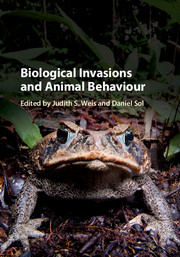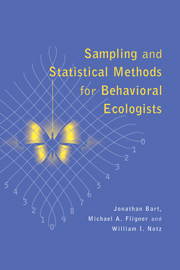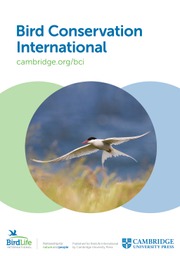Behavioral Approaches to Conservation in the Wild
Today's conservation literature emphasises landscape ecology and population genetics without addressing the behavioral links that enable the long term survival of populations. This book presents theoretical and practical arguments for considering behavior patterns in attempts to conserve biodiversity. Prominent scientists and wildlife managers are brought together in this volume to address a number of issues, including the limits and potentials of behavioral research to conservation, the importance of behavioral variation as a component of biodiversity, and the use of animal behavior to solve conservation problems and provide specific direction for research and management practices. The book emphasises conservation of wild populations as opposed to captive and reintroduced populations, where behavioral research has concentrated in the past. The variety of expertise in this volume demonstrates that the complete ethological framework, not just behavioral ecology, provides valuable techniques and knowledge for conserving biodiversity.
- First book exclusively devoted to the interface between animal behavior and conservation
- A prominent array of contributing authors from a wide range of behavioral disciplines
- Of great relevance to conservation methods of the future
Reviews & endorsements
'There is a lot of information brought together which has not been accessible in one volume, nor presented in this way before. I believe this is a valuable read in particular for students of animal behaviour. Forget about whether you are in the behaviourists' or conservationists' camp, if you are unsure whether this book is of interest to you, read any one of the chapters 9-14 and you are sure to find out.' Gillian Gilbert, Animal Behaviour
'Conservation biologists who read this volume will find it very inspiring.' Matthew H. Godfrey, Trends in Ecology and Evolution
'If this book did not exist, it would need to be written … a single book rarely changes scientific cultures, but it may be a starting point for more exchange between the disciplines. It provides a series of arguments why, in its ever increasing importance, conservation work should not be done (and actually cannot be done) without expertise in the field of behavioural mechanisms and functions. This book is therefore essential not only for ethologists, but is necessary for any decision-maker in wildlife management and conservation.' Ethology
Product details
January 1997Paperback
9780521589604
404 pages
229 × 153 × 23 mm
0.665kg
39 b/w illus. 8 tables
Available
Table of Contents
- List of contributors
- Preface
- General acknowledgments
- Part I. Problems and Issues:
- 1. Linking conservation and behavior Janine R. Clemmons and Richard Buchholz
- 2. Integrating behavior into conservation biology: potentials and limitations Steven R. Beissinger
- 3. Why hire a behaviorist into a conservation or management team? Peter Arcese, Lukas F. Keller and John R. Cary
- 4. Conservation, behavior and 99% of the world's biodiversity: is our ignorance really bliss? Hugh Dingle, Scott P. Carroll and Jenella E. Loye
- Part II. Conservation and the Four Levels of Behavioral Study:
- 5. Environmental stress, field endocrinology and conservation biology John C. Wingfield, Kathleen Hunt, Creagh Breuner, Kent Dunlap, Gene S. Fowler, Leonard Freed and Jaan Lepson
- 6. Conservation and the ontogeny of behavior Ian G. McLean
- 7. Hatching asynchrony in parrots: boon or bane for sustainable use? Scott H. Stoleson and Steven R. Beissinger
- 8. Behavioral variation: a valuable but neglected biodiversity Richard Buchholz and Janine R. Clemmons
- Part III. Examples and Case Studies:
- 9. Bioacoustics as a tool in conservation studies Luis F. Baptista and Sandra L. L. Gaunt
- 10. Mating systems, effective population size and conservation of natural populations Patricia G. Parker and Thomas A. Waite
- 11. The importance of social behavior studies for conservation Jan Komdeur and Charlotte Deerenberg
- 12. Linking environmental toxicology, ethology and conservation Edmund H. Smith and Dennis T. Logan
- 13. The problem of photopollution for sea turtles and other nocturnal animals Blair E. Witherington
- 14. Light, behavior and conservation of forest-dwelling organisms John A. Endler
- 15. On becoming a conservation biologist: autobiography and advice Katherine Ralls
- Author acknowledgments
- Index.








